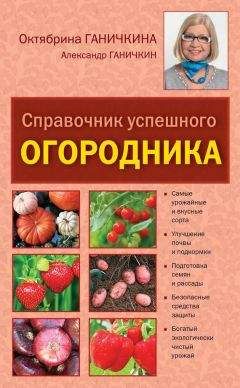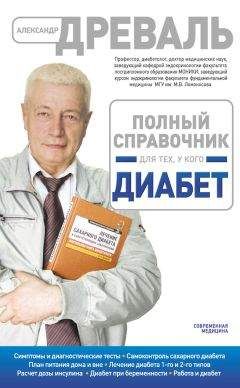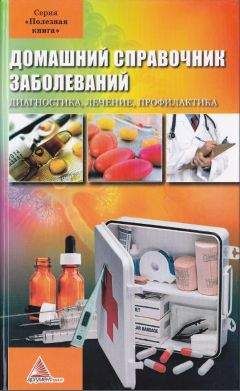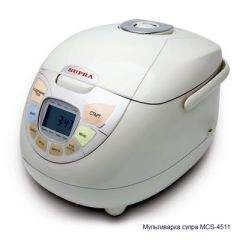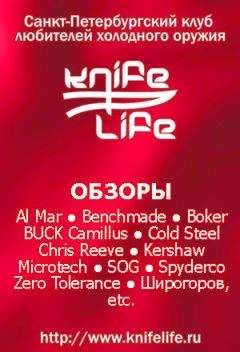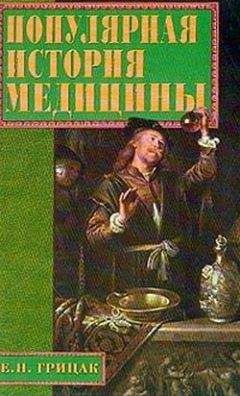Елена Беликова - Английский язык

Скачивание начинается... Если скачивание не началось автоматически, пожалуйста нажмите на эту ссылку.
Жалоба
Напишите нам, и мы в срочном порядке примем меры.
Описание книги "Английский язык"
Описание и краткое содержание "Английский язык" читать бесплатно онлайн.
Студенту без шпаргалки никуда! Удобное и красивое оформление, ответы на все экзаменационные вопросы ведущих вузов России.
The tongue, a muscular organ in the mouth, provides the sense of taste and assists in chewing, swallowing, and speaking. It is firmly anchored by connective tissues to the front and side walls of the pharynx, or throat, and to the hyoid bone in the neck.
The mammalian tongue is divided into two parts by a V-shaped groove, the terminal sulcus. At the apex of this V is a small blind pit, the foramen cecum. The larger part, or body, of the tongue belongs to the floor of the mouth, whereas the root forms the front wall of the oral pharynx. The body of the tongue is separated from the teeth and gums by a deep groove. A midline fold, the frenu-lum, is near he tip on the undersurface. The upper surface of the body, called the dorsum, has a velvety appearance because of filiform papillae. Distributed among these are occasional larger, rounded fungiform papillae and some large conical papillae. Immediately in front of the groove separating the body of the tongue from the root is a series of still larger vallate papillae arranged in a V-shaped row. The apex of the V points down the throat. Posteriorly along each side of the body of the tongue and near the root, is a series of parallel folds constituting the foliate papillae. The surface of the root of the tongue, which belongs to the pharynx, has no papillae but bears nodules containing lymphoid tissue.
New wordsbuccal – относящийся ко рту или щеке
palatine – небный
salivary glands – слюнные железы
parotid gland – околоушная железа
sublingual – подязыковой
43. The digestive tract structure
The gastrointestinal tract and associated organs are collectively called the digestive system. This system is responsible for receiving food and breaking it down by using enzymes from the glands and by the movement of the various parts of the intestinal tract; for absorption of these components into the blood; and for eliminating undigested food and certain metabolic wastes from the body. The alimentary canal extends from the mouth to the anus. It is a long tube varying in size and shape depending on what function the particular part performs. The tract has a very good blood sup ply, because food, once it is broken down, has to be absorbed into the bloodstream. The mouth contains the tongue and the teeth and communicates with the salivary glands situated round it. Behind the nose and mouth is the pharynx. Leading from the pharynx is a muscular tube called the esophagus which passes down the thoracic cavity to the stomach. The stomach lies below the diaphragm in the upper left side, of the abdominal cavity. The opening into the small intestine is called the pylorus and is closed by the pyloric sphincter. The small intestine is a muscular tube coiled up in the abdominal ca vity. It is divided into three parts; the duodenum, the jejunum, and the ilium. The large intestine, also a muscular tube but with wider lumen than the small intestine, is often called the colon. It is divided into several different parts: the, cecum, the ascending colon, the transverse colon, the descending colon, the rectum and the anal canal. The glands belonging to the digestive system are the salivary glands, the liver and the pancreas.
Stomach is probably the most distensible of any in the human body. The proximal portion is the cardiac portion; the portion above the entrance of the esophagus is the fundus; the distal portion is the pyloric part; and the body is between the fundus and the pyloric part.
The coats of the stomach are four: an outer, peritoneal or serous coat; a muscular coat, made up of longitudinal, oblique, and circular fibres; a submucous coat; and tine mucous coat or membrane forming the inner lining.
Gastric glands, which are in mucous coat, secrete gastric juice containing hydrochloric acid and other digestive enzymes into the cavity of the stomach. The glands of the fundus and body moot important in the secretion of gastric juice.
The shape of the stomach varies from individual to individual and from time to time in the same individual depending upon the degree of digestion, degree of contraction, and the age and the body-built of the individual. Frequently in more J-shaped than U-shaped so that its greater curvature can even lie in the greater pelvis. Cardia and fundus are relatively fixed and, hence, tend to move only with the respiratory excursions of the diaphragm.
New wordsgastrointestinal tract – желудочно-кишечный тракт
food – пища (еда)
enzymes – ферменты
intestinal tract – кишечный тракт
anus – задний проход
esophagus – пищевод
diaphragm – диафрагма
abdominal – брюшной
pyloric sphincter – пилорический сфинктер
44. The digestion
The process of digestion begins when food is taken into the mouth Chewing brеакs the food into smaller pieces, thereby exposing more surfaces to the saliva Saliva moistens the food, so facilitating swallowing, and it contains the enzyme which begins the conversion of carbohydrates into simple sugars.
The major processes of digestion do not occur until the food passes down through the esophagus into the stomach. The stomach has both a chemical and a physical function. The walls of the stomach, which are protected by a layer of mucus, secrete gastric juices composed of several enzymes and hydrochloric acid. The most powerful enzyme is pepsin, which begins the process of converting proteins into amino acids In addition, waves of contraction and relaxation, known as peristalsis, move the walls of the stomach. They turn the food particles into a semi-solid mass known as chyme
From the stomach, the chyme passes into the small intestine through the pyloric sphincter Proteins have not been completely broken down, carbohydrates are still being converted into simple sugars, and fats remain in large globules. In the small intestine the process of digestion is completed by the action of the bile, which is secreted by the liver and released by the gallbladder, and by the action of various enzymes which are secreted by the pancreas and walls of the small in testine Absorption of the products of digestion taken place mainly through the wall of the small intestine
DigestionChewing movements of the teeth, tongue, cheeks, lips and lower jaw break down food, mix it with saliva and roll it into a moist, soft mass called a bolus, suitable for swallowing. Having been rendered suitable for swallowing the food is pushed back into the pharynx by the tongue, and enters the esopha gus to be transported rapidly down the neck and thorax, through the diaphragm to the stomach. The mucous membrane of the stomach is equipped with millions of glands secreting mucus, digestive enzymes and hydrochloric acid.
The small intestine is the region within which the process of digestion is completed and its products are absorbed. Although its epithelial lining forms many small glands, they mainly produce mucus. Most of the enzymes present are secreted by the pancreas, whose duct, opens into the duodenum. Bile from the liver also enters the duodenum.
The absorption of the product's of digestion also takes place in the small intestine, although water, salts, and glucose are ab sorbed from the stomach and the large intestine.
The large intestine is chiefly concerned with the preparation, storage and evacuation of undigestible and unabsorbable food residue.
New wordsprocess of digestion – процесс переваривания
сhewing – жевание
saliva – слюна
to moisten – увлажнять
enzyme – фермент
carbohydrates – углеводы
stomach – живот
tongue – язык
hydrochloric acid – соляная кислота
absorption – поглощение
45. The digestive system: the function
The digestive system, or gastrointestinal tract, begins with the mouth, where food enters the body, and ends with the anus, where solid waste material leaves the body. The primary function of the organs of the digestive system are threefold.
First, complex food material which is taken into the mouth must be digested mechanically and chemically, as it travels through, the gastrointestinal tract.
Second, the digested food must be absorbed by passage through the walls of the small intestine into the blood stream so that the valuable energy-carrying nutrients can travel to all cells of the body.
The third function of the gastrointestinal tract is to eliminate the solid waste materials which are unable to be absorbed by the small intestine.
In the man the food in the mouth is masticated, that is to say it is bitten and broken up by the teeth and rolled into the bolus by the tongue.
The act of swallowing is divided into three stages
The first stage is under voluntary control. The food which has been transformed into a soft, mass by the act of mastication is brought into position upon the root of the tongue, and by the action of the lingual muscles is rolled backwards towards the base of the tongue.
The second stage is brief and is occupied in guiding the food through the pharynx and past the openings that lead from it. The muscular movements during this stage are purely reflex in nature. The third stage involves the passage of the food down the eso phagus. The food is seized by peristaltic wave which, traveling along the esophagus, carries the material before it into the stomach. The cardiac sphincter which guards the lower end of the esophagus and which at other times is kept tonically closed re laxes upon the approach of the bolus which is then swept into the stomach by the wave of constriction which follows.
Peristalsis is a type of muscular contraction characteristic of the gut and consists in waves of contraction, these running along the muscles, both circular and longitudinal, towards the anus.
If the food is fluid it enters the stomach six seconds after the beginning of the act, but If It is solid it takes much long e r, up to fifteen minutes, to pass down the esophagus.
In the stomach the food is thoroughly mixed by the series of contractions, three or four a minute, the contraction waves passing from the middle of the stomach to the pylorus. These tend to drive the food in the same direction, but the pylorus being closed, there is axial reflex, owing to which the food is well mixed. After a time – a bout a minute when water has been swallowed – the pylorus relaxes at each wave, allowing some of the stomach contents to enter the duodenum. Fat stays in the stomach longer than carbo hydrate, but all food leaves generally in three or four hours. In the small intestine the food continues to be moved by peristalsis, the latter controlled by the deep nerve plexus. The small intestine undergoes segmentation movements, the food contents being thoroughly mired The wall becomes constricted into a number of segments and then about five seconds later the constrictions disappear, there being another set exactly out of phase with the first. The large intestine undergoes infrequent powerful contractions, food having entered it. From the large intestine the food enters the rectum.
New wordsvoluntary control – добровольный контроль
soft – мягкий
mastication – перетирание
position – положение
root – корень
46. The digestive system: liver and stomach. Sources of energy
Liver, the pancreas and the kidneys are the organs primarily engaged in the intermediary metabolism of the materials resorbed from the gasro – intestinal tract and in the excretion of metabolic waste products Of these 3 organs the liver performs the most diverse functions. It acts as the receiving depot and distributing center for the majority of the products of intestinal digestion and plays a major role in the intermediary metabolism of carbohydrates, fats, proteins and purines.
It controls the concentration of cholesterol esters in the blood and utilizes the sterol in the formation of bile acid. The liver takes in the regulation of the blood volume and in water metabolism and distribution. Its secretion, the bile, is necessary for fat digestion
The liver is a site for the formation of the proteins of the blood plasma, especially for fibrinogen, and also forms heparin, also forms heparin, carbohydrate which prevents the clotting of the blood It has important detoxicating functions and guards the organism against toxins of in testinal origin as well as other harmful substances The liver in its detoxicating functions and manifold metabolic activities may well be соnsidered the most important gland of the body.
The normal position of the empty human stomach is not horizontal, as used to be thought before the development of rentgenology. This method of examination has revealed the stomach to be either somewhat J-shaped of comparable in outline to a reversed L. The majority of normal stomachs are J-shaped. In the J-shaped type the pylorus lies at a higher level than the lowest part of the greater curvature and the body of the stomach is nearly vertical.
The stomach docs not empty itself by gravity, but through the contraction of its muscular wall like any other part of the diges tive tube, of which it is merely a segment.
Gastric motility shows great individual variation; in some types of stomach the wave travels very rapidly, completing its journey in from 10 to 15 seconds. In others the wave takes 30 seconds or go to pass from its origin to the pylorus. The slow waves are the more common.
Sources of energyThe fuels of the body are carbohydrates, fats and proteins. These are taken in the diet.
Carbohydrates are the principal source of energy in most diets. They are absorbed into the blood stream in the form of glucose. Glucose not needed for immediate use is converted into glycogen and stored in the liver. When the blood sugar concentration goes down, the liver reconverts some of its stored glycogen into glucose.
Pats make up the second largest source of energy in most diets. They are stored in adipose tissue and round the principal internal organs. If excess carbohydrate is taken in, this can be converted into fat and stored. The stored fat is utilized when the liver is empty of glycogen.
Proteins are essential for the growth and rebuilding of tissue, but they can also be utilized as a source of energy. In some diets, such as the diet of the Eskimo, they form the main source of energy. Proteins are first broken down into amino acids. Then they are absorbed into the blood and pass round the body. Amino acids not used by the body are eventually excreted in the urine in the form of urea. Proteins, unlike-car-bohydrates and fats, cannot be stored for future use.
New wordsfuels – топливо
principal source – основной источник
energy – энергия
glucose – глюкоза
glycogen – гликоген
stored – сохраненный
adipose – животный жир
amino acids – аминокислоты
47. The urinary system: embriogenesis
The urinary system is formed mainly from mesodermal and endodermal derivatives. Three separate systems form sequentially. The pronephros is vestigial; the mesonephros may function transiently, but then mainly disappears; the metanephros develops into the definitive kidney. The permanent excre tory ducts are derived from the metanephric ducts, the urogenital sinus, and surface ectoderm.
Подписывайтесь на наши страницы в социальных сетях.
Будьте в курсе последних книжных новинок, комментируйте, обсуждайте. Мы ждём Вас!
Похожие книги на "Английский язык"
Книги похожие на "Английский язык" читать онлайн или скачать бесплатно полные версии.
Мы рекомендуем Вам зарегистрироваться либо войти на сайт под своим именем.
Отзывы о "Елена Беликова - Английский язык"
Отзывы читателей о книге "Английский язык", комментарии и мнения людей о произведении.








